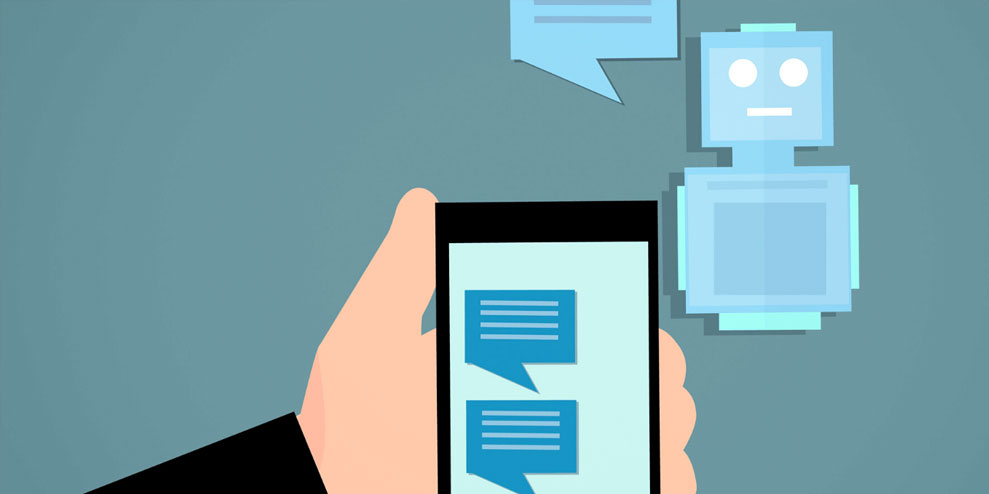Advances in artificial intelligence are leading to ever-more sophisticated conversational AI. What are the pros and cons?
Most of us have used conversational AI – even if we did not realise it at the time. Conversational AI is a set of technologies that enable computers to understand, process and respond to voice or text inputs in natural ways. In addition to platforms like Alexa and Siri, it is also often used in the form of chatbots, particularly in customer service.
Done well, conversational AI helps people interact with complex systems faster and easier and helps businesses deliver better and cheaper personalised support. Done poorly, it combines all the worst aspects of “computer says no”.
As advances in artificial intelligence allow the development of ever-more sophisticated conversational AI, it is likely that its use will increase. So, what are the pros and cons of conversational AI and chatbots?
Pros: Advantages and Opportunities
Cost
This is one of the main reasons many businesses are interested in conversational AI – chatbots are a lot cheaper than humans, and they do not need time off. This can make chatbots seem like a good solution for large companies or those that are growing rapidly.
However, installing a conversational AI system can have large up-front costs, and this may put these systems out of reach of smaller companies. The greatest advantage may not be in reducing the human workforce, but in allowing companies to reallocate their human staff to answering more difficult queries and improving service. This leads us to reason two: improved service.
Improved service and sales
The conversations that customers have with businesses matter a lot. They can shape customers’ opinions and their dedication to a brand. Customer service representatives are only human, so their responses to customer queries can vary.
A chatbot, however, will always stick to the rules that are set for it. It will always respond in the exact same manner. Chatbots can also be programmed to speak multiple languages, allowing companies to reach more customers, and they can be available 24/7.
Chatbots can also be used to market products and send out updates to customers. This can be a more personalised mode of marketing and can improve the chances of converting ads or queries into sales as well.
Data collection
Conversational AI can be a big help in gathering data through customer interactions. This can include insights about customer activities, preferences, problems and more. Users can then sort through the data to highlight common queries and understand the types of information customers most often want. Companies can use this data to solve problems, update their website information and upgrade internal processes.
Cons: Disadvantages and Risks
They aren’t human
This may seem obvious, but people often want to interact with customer service representatives that have empathy and can respond accordingly. Despite continuous improvements aiming to make them more “life-like,” chatbots can still seem mechanical. And, while chatbots have no difficulty in handling customer requests that follow a predicted path, they are unable to improvise when the conversation takes an unexpected turn.
New approaches to conversational AI are focusing on creating chatbots with personality and that can appear to express empathy. Highly context-aware chatbots are also being developed that can “remember” elements of past conversations or adapt to different contexts.
They can then use this information to respond in a more realistic way. It remains to be seen, however, how people will feel about interacting with a business when they can no longer tell if they are talking to a human or a bot. And this highlights another issue – high expectations.
Frustration
Primed by movies like “Her” and “Jexi,” and PR, people are increasingly expecting conversational AI to respond as a human would. But it is still not possible to have an actual conversation with a bot. For example, Alexa can tell you what the weather will be like, but it can’t give a personalised answer to a question like: “What should I wear today?”
IBM Research Manager David Konopnicki, who studies affective computing, points out that: “Even when people know that they are having a conversation with a computer, it’s surprising to see that they not only appreciate that the computer has empathy — they expect it.” These expectations can then lead to frustration when they cannot be met. And of course, the best bots are the most expensive, meaning that once again smaller companies may have difficulty in meeting customer expectations using bots.
One of the greatest disadvantages of most conversational AI is that it can only handle first-level questions, rather than complex queries. For the customer seeking an answer to a simple question about shoe sizes or billing, this is not an issue. But for systems like Siri, the ability to hold a real conversation would be a game-changer.
But to do this, the AI will need to know a lot more about each user. And it is not yet clear whether people will be willing to give algorithms unfettered access to every aspect of their lives or to reach a place where it is impossible to tell if they are talking to a human or a machine.
For now, chatbots remain a very useful tool. They may ultimately progress further than this, to a type of personal assistant that knows as much about our lives as we do. The day when this happens is coming ever closer, but whether we want it to or not is another question.
–
This article first appeared in www.springwise.com
Seeking to build and grow your brand using the force of consumer insight, strategic foresight, creative disruption and technology prowess? Talk to us at +9714 3867728 or mail: info@groupisd.com or visit www.groupisd.com




